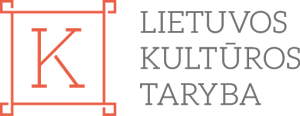#27 Regeneration [and its Discontents]
Rhythmic Encounters: Aural Architecture and Sonic Interstices
Why the talk is inspiring?
A visual approach in architecture and urban design shadows hearing and listening abilities. Sound is an important element in helping users understand their environment. This acoustic environment is not only background sound or specific soundscapes; neither is it simply a question of noise pollution caused by traffic or daily activities. It is rather about understanding auditory experiences and discovering the sonic territories in urban space by listening and hearing.
The speakers argue that there is a big potential in researching sound in architecture and urban design practice. How can sound contribute to understanding the built environment? What are the methodologies that foster sound as a participatory tool? In the lecture, the ambivalent relation between sound, architecture and urban space will be discussed from a historical point of view while presenting the speaker’s own interdisciplinary methodologies.
LINK TO THE VIRTUAL LECTURE -> YouTube
2020
Speaker
Samuel Perea-Diaz, Banu Çiçek Tülü
How the speaker is exceptional?
Samuel Perea-Diaz is an independent researcher and spatial designer from South of Spain based in Berlin. Samuel holds a degree in architecture from the University of Seville and is currently enrolled in the program Sound Studies and Sonic Arts at the Berlin University of the Arts. He has collaborated in a transdisciplinary context within different design offices with the main focus in museum scenography. Samuel’s work addresses art practice as a form of investigation in the everyday, presenting the results of his studies with site-specific installations and situated-sound objects, including field-recording and soundwalk.
Banu Çiçek Tülü and Samuel Perea-Diaz are tutors of Berlin Sonic: Auditory Collective Explorations at the Humboldt University Berlin in which the students discover the urban space and the politics of sound. Together, we conduct different academic and artistic research projects at the intersection of spatial practices and sound environment.
RECOMMENDS TO READ
Space Speak, Are You Listening? Experiencing Aural Architecture
Barry Blesser, Linda-Ruth Salter
Why the book is worth reading?
The book offers the reader a broader context of aurality, auditory spatial awareness, aural arts and musical spaces. Sound has been researched with an interdisciplinary approach and it is a part of every environment that the authors name it as aural architecture. It has been reviewed as a study that discusses some of the missing components of sound, aural awareness, and perception that continued to receive little or no attention from those who are working in built environment-related fields. The authors suggest understanding aural architecture of a space. In that sense, architecture presented as a symbol that communicates with the users. Architects choose the spatial elements to reflect the meaning of a culture. However, these symbols stuck in the visual appearance of a structure. As the authors highlight that the environment has its audible characteristics; the blended surfaces, objects, and geometries in a complicated environment create an aural architecture. In summary, the authors refers that aural architecture refers for them to the properties of a space that can be experienced by listening. An aural architect can create a space that encourages or discourages social cohesion among its inhabitants by using sound.
RECOMMENDS TO READ
The Soundscape: Our Sonic Environmet and the Tuning of the World
R. Murray Schafer
Why the book is worth reading?
The city is no longer regarded as a site for industrial production and functionality alone, but also serves as a space for sustainable and cultural production in a human-scaled city. Ecological approaches considering sound in the city has been extensively researched by R. Murray Schafer who founded the The World Soundscape project. Composer R. Murray Schafer brought the soundscape terminology into discussion regarding its impact upon the social and sonic environment.


